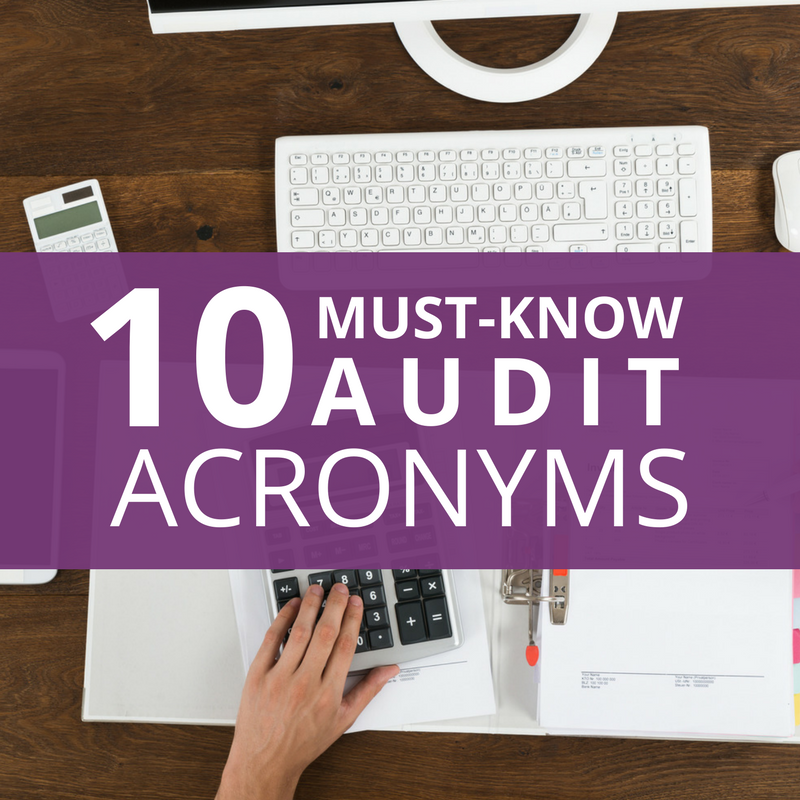If you’re going into audit in a public accounting firm for the first time, you may be feeling a bit nervous or on edge. Whether you’re stepping foot into this firm through an internship or a full-time paid position, it’s normal to have jitters as you embark on a new phase in your professional career.
During your first week, you may run into many terms and phrases you aren’t familiar with. If your senior manager keeps telling you to “Check the P&L, check the P&L!” and you have no idea what he or she is talking about, don’t worry. You’re not alone. Which is why we put together these top 10 must-know acronyms you should be confident in knowing to help give you an advantage in your first year of public accounting.
1. Search for unrecorded liabilities (SURL) is an audit test accounting firms perform on almost every client.
It’s almost always assigned to first years and interns. The purpose is to try and find liabilities that have gone unrecorded as of the balance sheet date under audit.
You do this by selecting payment transactions subsequent to year end (January or February in the case of a 12/31 year end) and determine based on the invoice and shipping documents, “Should this have been included as a liability as of 12/31? If yes, was it? If no, was it excluded?”
You team should always walk you through their entire procedures, but if you hear SURL, you’re now prepared!
2. Profit and loss statement (P&L) is the income statement!
How simple, we know. It’s basically the statement of profits and losses for the company for any given period.
3. General Ledger (GL) is a complete record of financial transactions over the life of a company or for a given period.
The ledger holds account information that is needed to prepare financial statements (descriptions, account numbers, account totals, etc), and includes accounts for assets, liabilities, owners’ equity, revenues and expenses. It can be easy to mix them up because they sound the same–so be careful!
4. Trial Balance (TB) is a statement of all debits and credits in a double-entry account book, with any disagreement indicating an error.
It may take you some time to find out how the TB is different from the GL. But what it essentially comes down to is that the trial balance is like the account summaries whereas the the general ledger has every journal entry posting from the entire period!
5. Immaterial (IMM) is also known as, “We don’t want to do anymore work over this area.”
However, what the term actually means is based on the materiality thresholds set for the engagement. Materiality is basically the finances of an error you don’t want to miss.
6. Workpapers (W/P) are where the team includes the work they perform.
These docments typically make up the file, binder, or database (name varies by firm) which is the collection of audit work supporting the partners opinion on the financial statements.
7. Footed (F or ^)
This is performing addition on a given column in work papers.
8. Tickmark (T/M or TM)
This means a digital mark in work papers. It’s used to document the work performed by referencing across parts of a document. Think of it as a key or legend. However, be aware that it is NOT a physical item. If someone asks you to “pick up a box of tick marks from the office supply room,” the sweet admin lady may help you for 15 minutes before someone asks what you’re doing.
9. Pass on further work (P/F/W)
This is a term used to basically communicate that this is where everything comes to an end. Usually this means the appropriate level of work was performed so it is time to stop. Usually…
10. Permanent File (PF)
This is a section of the audit file where you keep documents you may need for long periods of time. Debt agreements, articles of incorporations, shareholder documents, etc.
BONUS: Cumulative Audit Knowledge and Experience (CAKE) “AKA” grasping for straws.
Using CAKE is almost like saying, “rely on the engagement teams opinion because they couldn’t or didn’t find any more evidence”.
We hope you found this useful and wish you the best of luck on the job!
